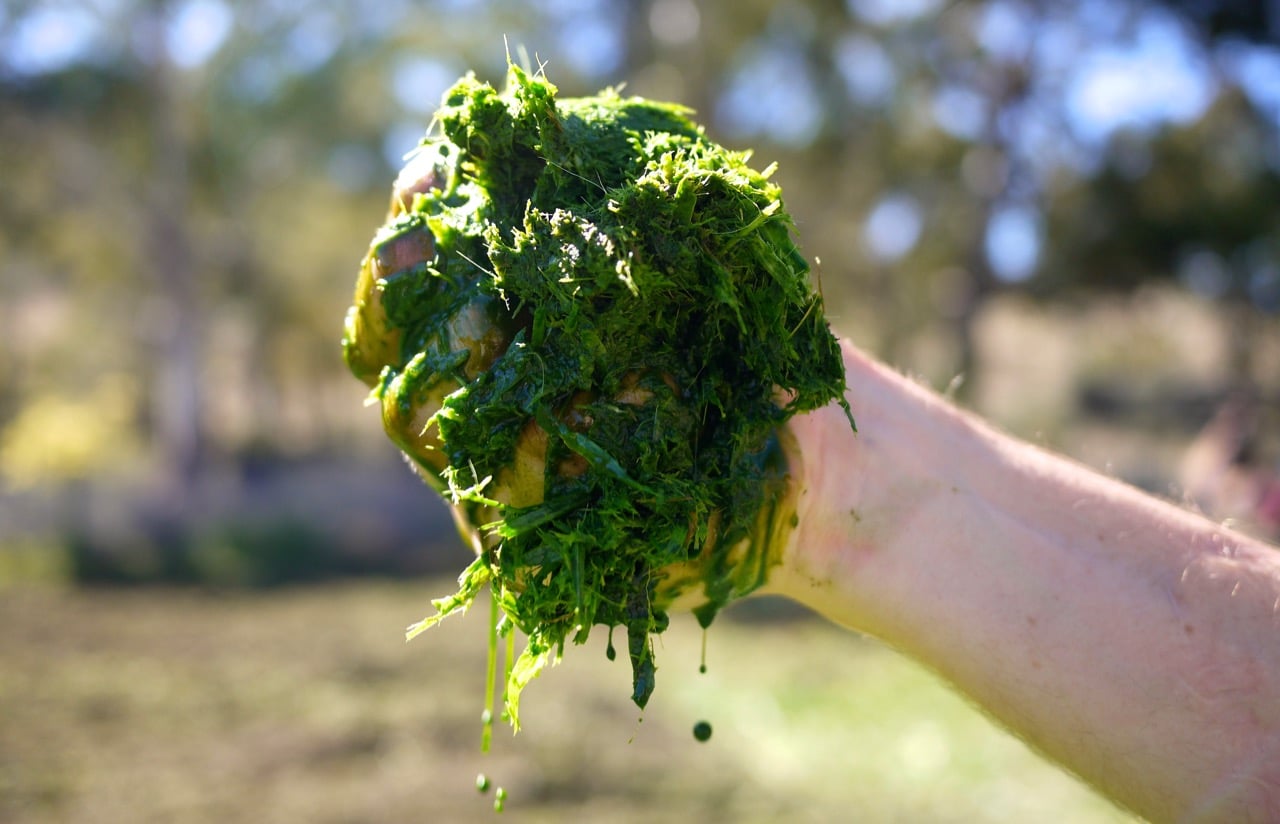
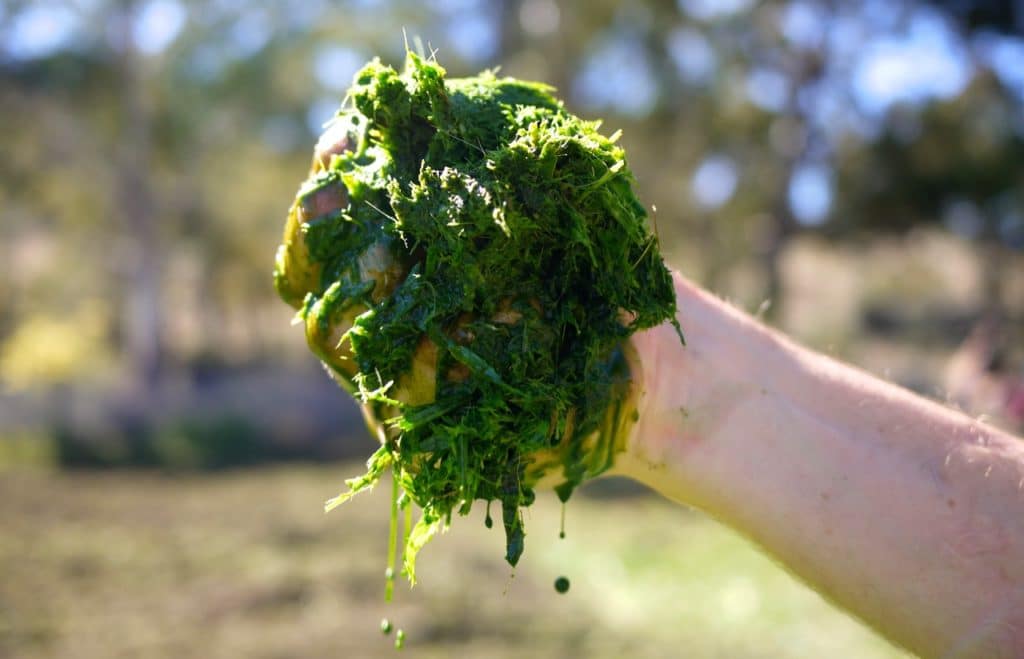
Whether you have a small veggie patch or an expansive forest garden, adding green manures is a great way to replenish or build soils with minimal input.
Thanks to nature and photosynthesis, sowing a ‘green manure’ mix of seeds will give your garden a crop of specialty plants that convert sunlight into biomass for your soils and add maximum nutrients, too – and all for free.
The ‘manure’ part is a touch confusing though – there’s actually no animal poo involved.
Instead, green manuring is all about sowing fast-growing, specific plants for a few weeks or months, then purposefully cutting down their juicy foliage and digging all that green matter back into the soil, where it decomposes – enhancing your garden’s soil balance, and eventually coming back around as food for us all.
What is green manure and why it’s a Very Good Thing
Green manures are grown from the seeds of fast-growing, specific, usually annual plants – often a legume combined with a specific grass (e.g. oats). And there’s different combinations of green manure seed mixes that suit different soils and climates.
The effect of using green manures is a bit of magic for your garden – as the legumes (clover, lucerne, peas or beans) provide nitrogen, while the plants from the grass family provide plenty of organic matter.
But a note of caution here – when I say ‘grass’, I’m referring to cereal grains such as barley, oats or sorghum, not problematic running grasses such as couch or kikuyu, like you find in your lawn. That is not a mistake you want to make!
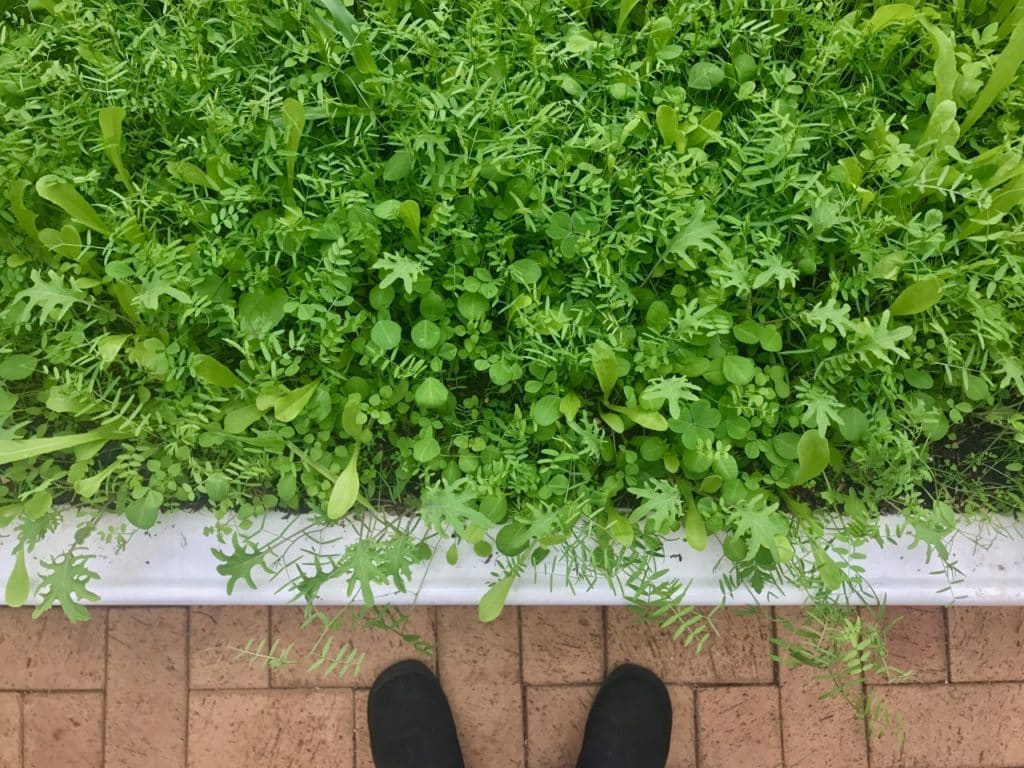
Benefits of green manures
Planting green manures as part of your yearly rotation in parts of your veggie garden is an outstanding way to improve your veggie harvest and, as a bonus, break diseases cycles in your soil.
Check out the list below of green manure benefits:
- Increase organic matter, earthworms and beneficial microorganisms.
- Increase the soil’s available nitrogen and moisture retention.
- Stabilise the soil to prevent erosion.
- Bring deep minerals to the surface and break up hardpans.
- Provide habitat, nectar and pollen for beneficial insects and reduce populations of pests.
- Improve water, root and air penetration in the soil.
- Smother persistent weeds; good choices for weed suppression include lablab, cowpea, lucerne and buckwheat.
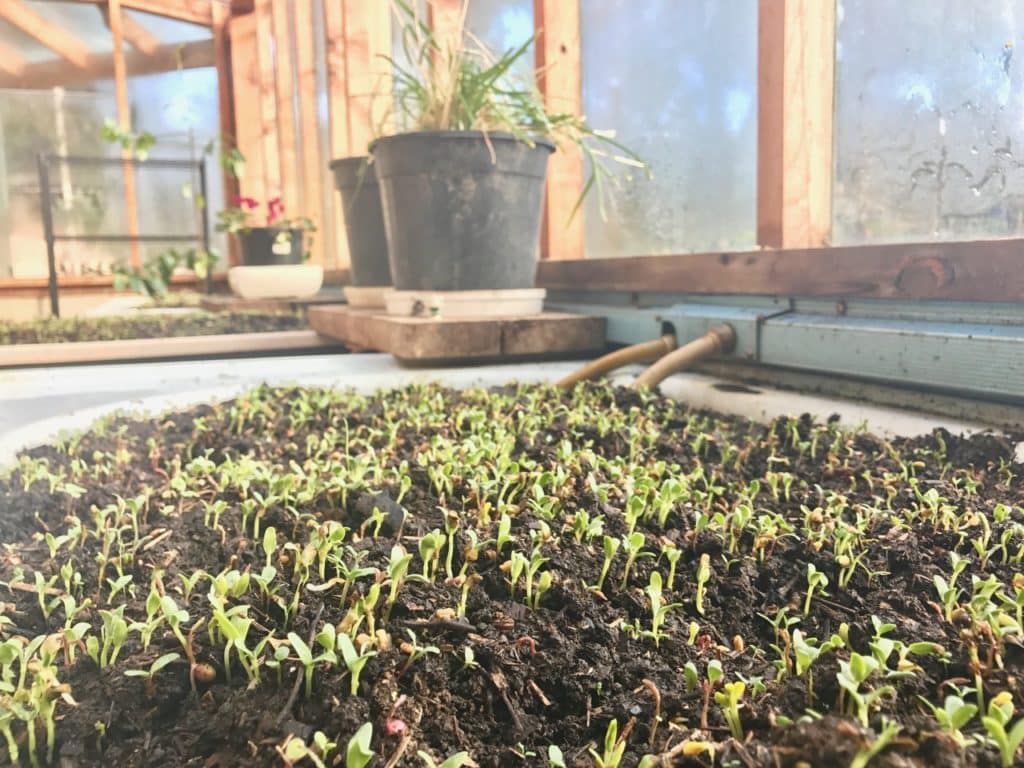
When and how to plant and a green manure crop
If you have access to appropriate seeds, you can plant a green manure crop at any time of year (depending on your climate, obviously).
But, as a starting point, summer or winter is the best time to plant a green manure crop – for digging in the following autumn or spring.
In general, it’s a process that helps ensure you’re moving your soil forwards, not backwards. Regeneration is the name of the game here.
You might decide to plant a green manure crop to:
- Rest your land, improve the soil and create a bit of balance.
- Fix nitrogen and generate lush biomass in preparation for planting heavy-feeding veggies next, such as brassicas or tomatoes.
- ‘Hold the space’ back from opportunistic weeds until you have time or the right weather to plant the crop you really want.
- Provide a living understorey for growing vegetables – green manures help protect the soil, retain water and provide a host of nutrients while they grow.
- Help correct acidic soil – if your soil is less than 7, it has a low pH (this applies to most Australian soils). Adding green manure crops into your rotation with more frequency can help.
- Cultivate and loosen compacted soil in the early stages of forest establishment – green manures and other transitional ground covers can be sown between the pioneer trees and shrubs.
Our favourite way to plant a green manure crop is by broadcasting a good-quality seed mix over the patch we want to use it on, and then raking it all in so the birds can’t eat all the seeds. Sometimes we put a layer of shade cloth over the area to help with this, until everything’s germinated well. Shadecloth is also super useful to help contain soil moisture while your green manure crop germinates.
You’ll then need to keep this bed moist, to ensure the seeds germinate.
For a winter green manure, you’ll hopefully be blessed with rain – check the weather and aim to broadcast your seeds just before a rainy spell, and rake them in well. For drier weather, you may need to rig up a sprinkler, irrigation or remember to water daily, to keep the soil moist at least until germination happens.
And then watch as a lush green carpet develops…
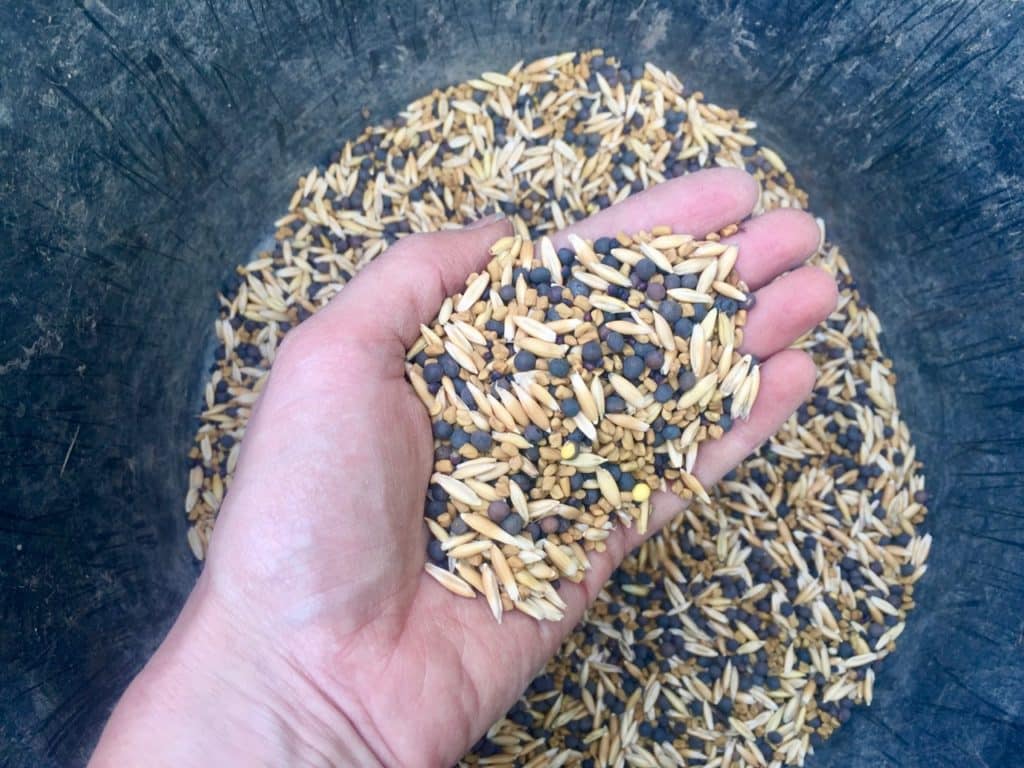
Best green manure seed mixes for winter
Back in the days of our Milkwood Farm, sowing winter green manure crops was a crucial part of the organic vegetable growing regime – the green manures convert sunlight to nutrients, then get dug into the soil in early spring, and become food for us all.
We used them extensively all over our Milkwood Farm for the years that we were there.
In the more exposed parts of the farm, we used green manures when building earthworks such as dams and swales. (That led to mixed success, with some big disappointments due to incorrect species selection, drought, rabbits and the like.)
But in the more protected micro-climates, like the Milkwood Farm forest garden or the market garden – where there was certainty of regular watering – green manures quickly became an essential part of the winter cycle of establishing and managing plantings.
Adding winter biomass builds the soil’s water-holding capacity – a crucial thing to help safety steward summer annual food crops through the long, hot summers we experienced on the farm.
Our favourite winter green manure seed mix – the one we used over and over, every year – is Green Harvest’s Cool Season Green Manure Kit. If you can’t access this fine Australian seed company’s seeds because of where you live, the species combo is:
- Oats
- Woolly pod vetch
- Fenugreek
- Subclover
We’ve found it suitable for everything from the dry and hot conditions of Wiradjuri country near Mudgee (New South Wales) to the cooler climate of Djab Warrung country near Daylesford in Victoria, where we grew huge green manures while living at David Holmgren and Su Dennet’s Melliodora property.
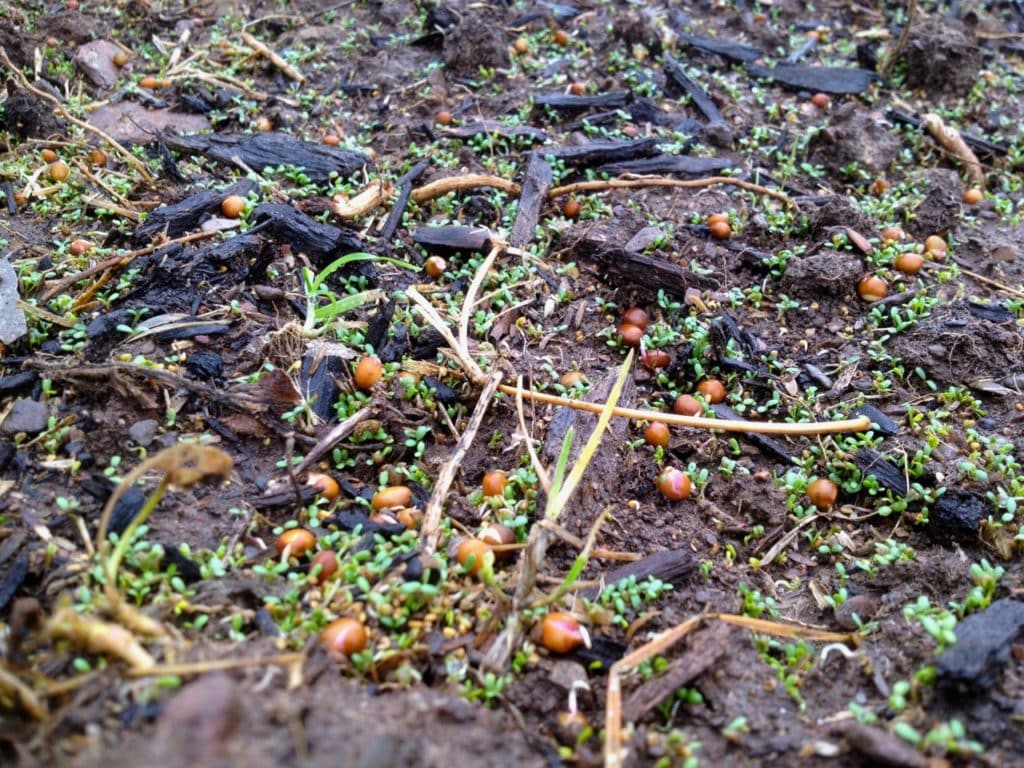
Best green manure seed mixes for summer
Summer green manures are great for shielding soil from the harsh sun, which helps prevent erosion and retain moisture in hot, dry conditions.
These crops can also help reduce soil compaction, fix nitrogen and draw nutrients up to the surface from the subsoil.
We currently use Southern Harvest’s Winter Green Manure mix, and it’s great. Other excellent options include Eden Seeds, and Diggers Club‘s various green manure mixes. Most countries in the world will have a similar product available.
Please support your local open-pollinated seed companies whenever you can to source these seeds! If you’re operating on a small farm scale, it may make more sense to buy 20kg of each seed variety from your most ethical bulk seed supplier. The combination is:
- Cowpea, buckwheat and Japanese millet, or
- Mung bean, buckwheat and French white millet.
Note that both these seed mixes are suited to temperate and cool-temperate climates – if you’re in another climate, ask around (at your local nursery or community garden is a good place to start) and find out what a good green manure seed mix is for where you live… remember that that combination of a nitrogen-fixing legume and a cereal-like grass species is a great place to start.
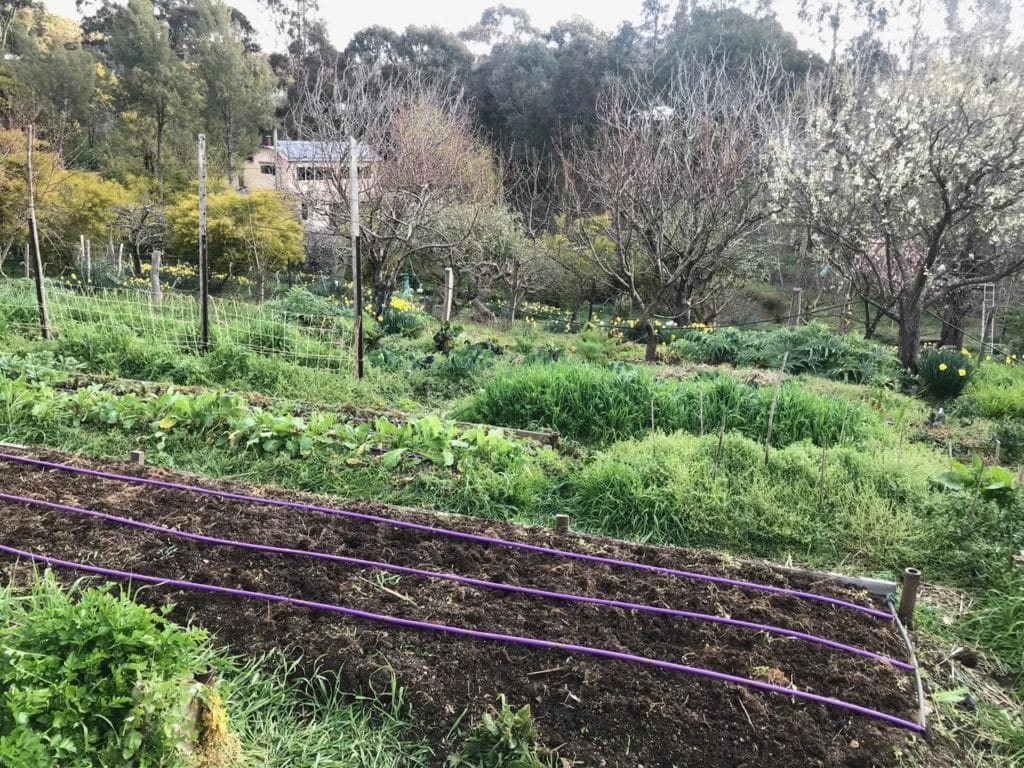
When and how to dig in green manures
While planting green manures is pretty easy, a bit of future planning is also important here – you need to ensure you leave enough time for the green manure seed to germinate, grow and (maybe) begin to flower, to make the most of it.
At that point, your green manure crop is ready to be chopped down or dug in, where it will start to decompose. (Tip: cut down the green manure crop before it starts fully flowering, otherwise it will start using nutrients from the soil.)
Most seed providers give this timeframe as a guide: “Generally allow a minimum of 8 weeks for the green manure to grow and 6 weeks for it to decompose.”
There’s a couple ways to chop and incorporate your green manure, depending on how big your patch is and how quickly you need to plant into it.
On a small scale – say a veggie bed or two, you can simply hack it all down with a rice knife or similar, lay it down on the bed, wait a week for it to start decomposing a bit, and then plant seedlings directly into your lovely pre-mulched bed. Or, you can run a mower over the bed, making sure you empty the mushed green manure biomass back onto that bed, and maybe dig it in. Wait a few weeks, and plant into that.
In the past, we have also tarped beds after chopping-and-dropping our green manure crop (tarping is literally putting a plastic tarp on the bed and holding it down with a brick in each corner) and left it for 4 weeks before prepping for the next rotation.
Tarping holds the moisture in, speeds up the decomposition of the green manure biomass, the worms in your soil have an absolute party, and four weeks later, that bed will be pretty much ready to either plant into (if you’re doing no-dig) or prep for your next crop.
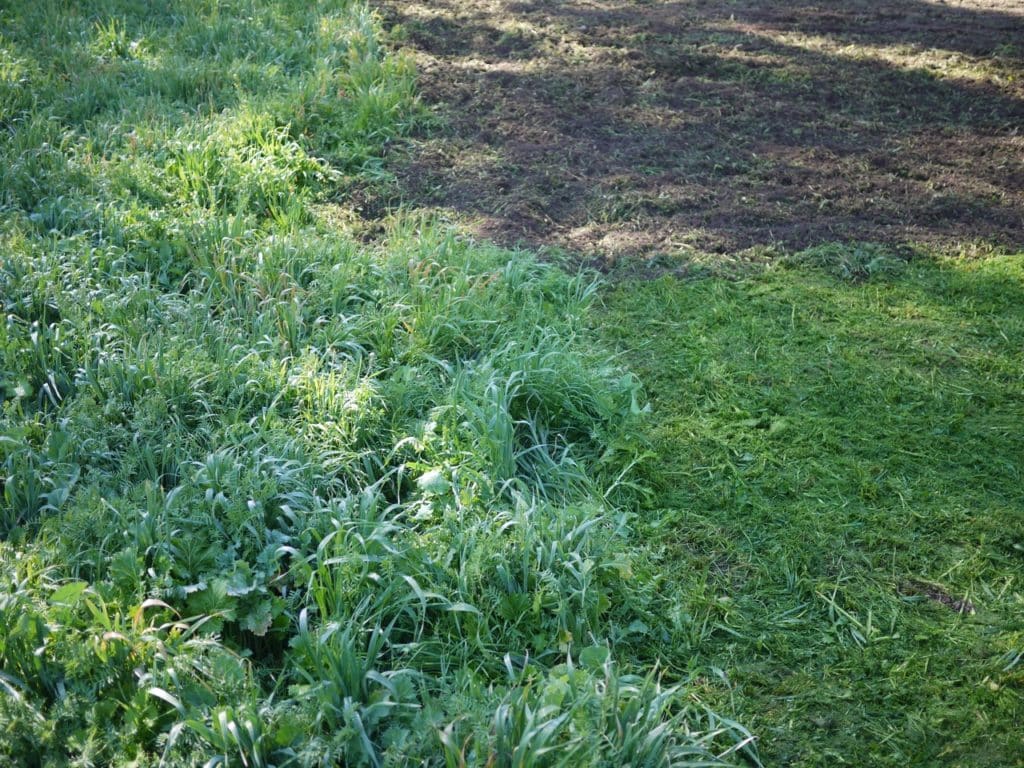
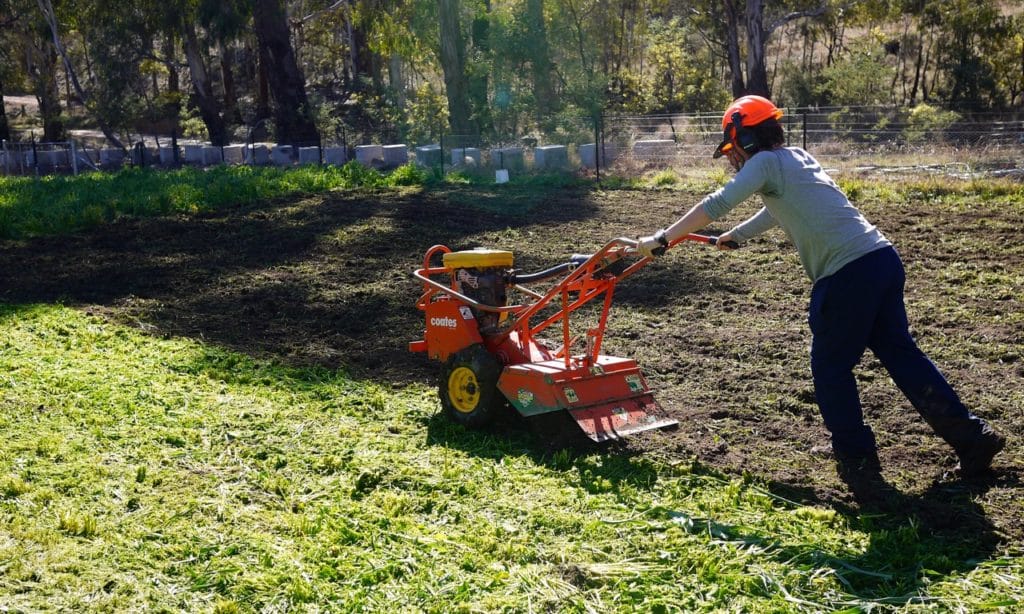

Digging in green manures on a larger scale…
Back in our Milkwood Farm days, in our organic market garden, we would first mow the green manure (without a catcher, so the mushed plants ended up back on the bed), then roto-till it all into the soil, and then plant directly into that.
For intensive vegetable production, turning the green manures into the soil is a great way to cycle nutrients quickly and create high production rates.
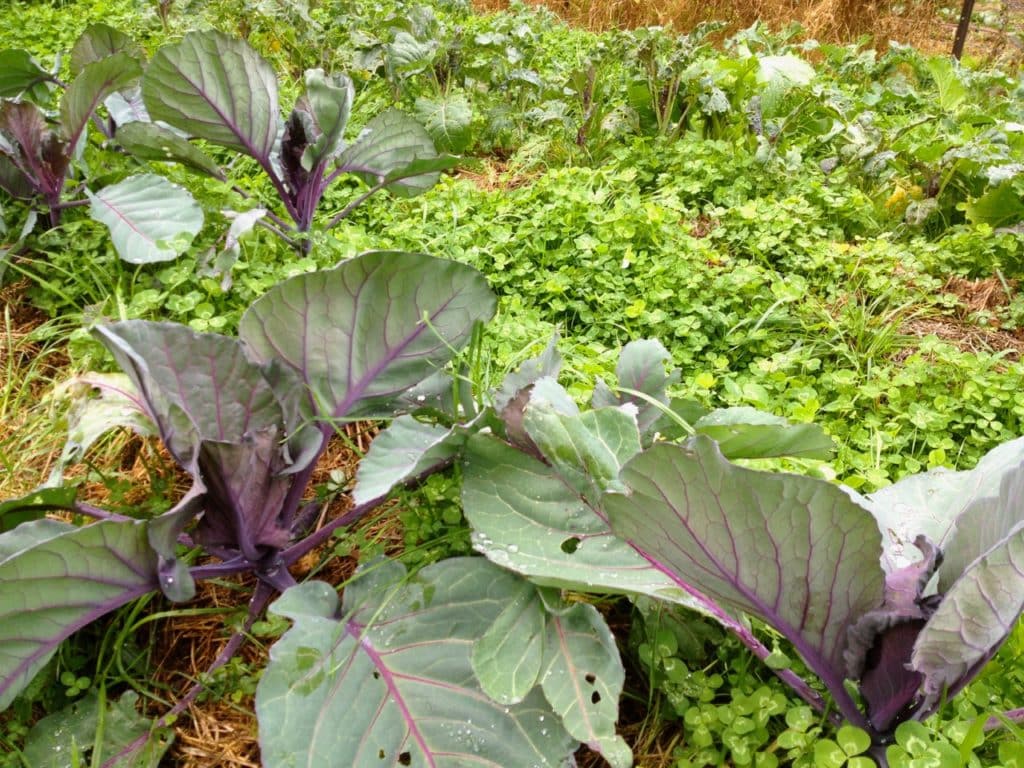
What veggies to plant after green manures
Green manures are excellent for pumping your soil full of nutrients and life – so heavy feeding veggies will often produce excellently if planted next in the bed.
For example, if you’ve had a spot where you’ve planted a green manure over winter, your spring tomatoes – which are heavy feeders and LOVE nutrients – will appreciate those extra nutrients in the soil.
Crop rotation does take a bit of planning and forethought, but where we can, we like to do it this way – root veggie beds give way to fruiting plants, fruiting plants give way to leafy greens, leafy greens give way to legumes or green manures.
And around the cycle it all goes.
Got ponds, or dams? You can utilize these for green manure production too
Yes, you can use aquatic plants for your green manures, too. Plants like azolla, for example, make an excellent aquatic green manure to top-dress or dig into your veggies beds.
In some places, azolla (a type of very small-leaved, floating water fern) is a problematic plant when it establishes on dams, but that’s all the more reason to harvest and use it on your veggie beds. Instant green manure, if you will
Until recently, azolla was used extensively in rice paddies across Vietnam, China and other parts of Asia, where it would cover the surface of the water in the paddy and out-compete weeds while the rice grew, and then fix nitrogen and contribute fertility to the soil, once the paddies were drained, later in the rice growing process.
We have an article on azolla here, if you’re interested in learning more. You might have other water weeds, or fast growing water plants, that you can look into to do this same job, too.
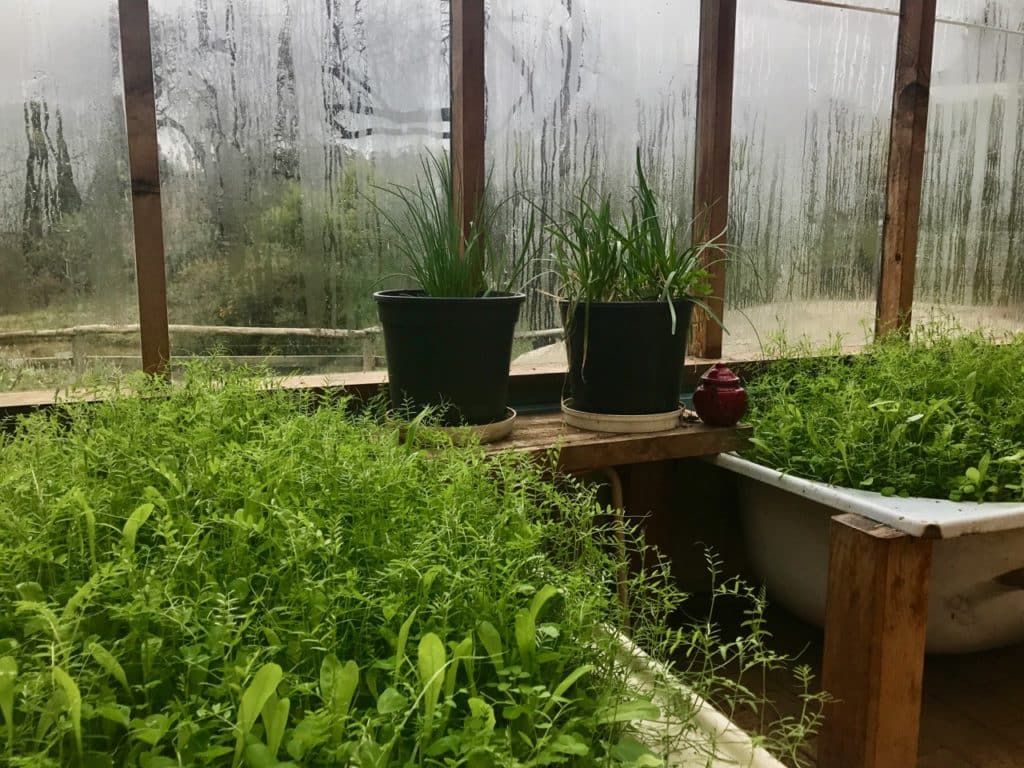
Other clever ways to harness the power of green manure
In a greywater recycling system
If you’re wanting to set up your own bathtub greywater system (we have a how-to guide on exactly how to do that over here), you’ll need to create a holding pond for water that has cycled through your worm farm and reed bed.
It’s best to deposit that trickle of outgoing water into a large garden bed used for summer main crops like corn and wheat. Over winter, this damper area is an excellent spot to grow green manures.
Beneath moveable greenhouses
Movable greenhouses (on rails, skids or wheels) can be a great idea for the serious backyard grower or small-scale veggie farmer.
To help ensure disease-free soil, you move the greenhouse to a new spot every now and then – or rotate between two patches – and use the cleansing powers of sunlight on the earth and photosynthesis in the forms of green manures to assist your garden’s nutrient cycling. Which ensures good food grown in healthy soil – all year round. More info on moveable greenhouses here.
You can also use green manure mixes in fixed greenhouses to regenerate the soil just as well.
So, scatter your clover seeds and some oats and vetch also – and let us know how you go?
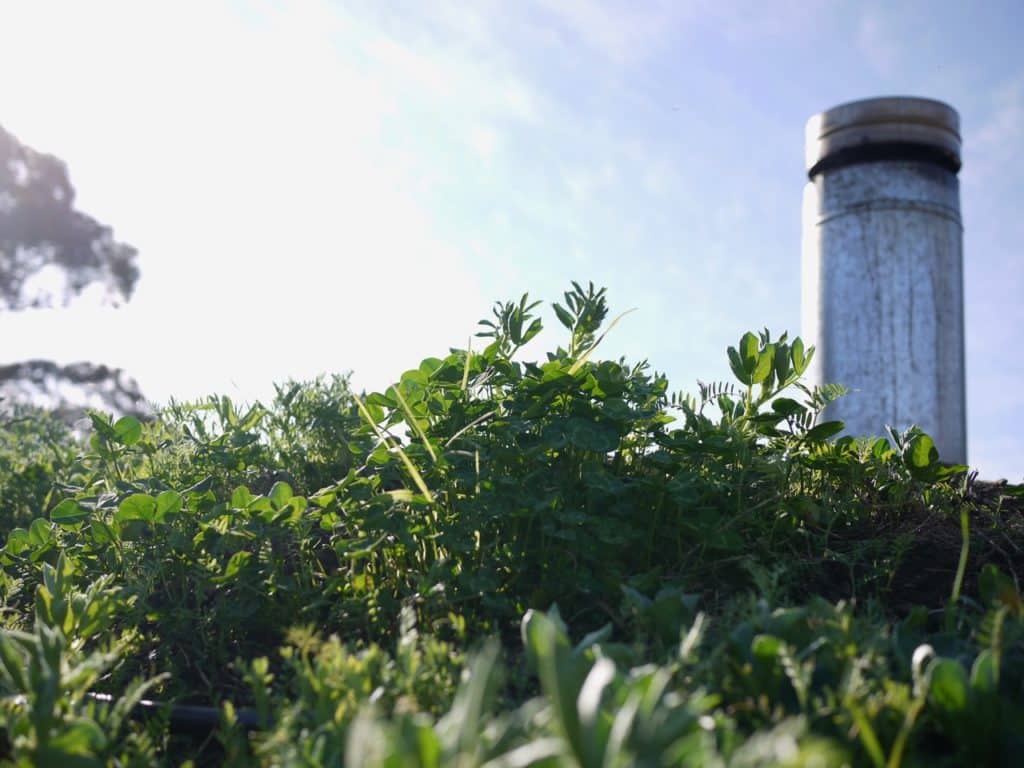
Resources
- We currently use Southern Harvest’s Winter Green Manure mix, and it’s great. Other excellent options include Eden Seeds, and Diggers Club‘s various green manure mixes. Most countries in the world will have a similar product available.
- How to: test your garden soil’s pH, and balance it for a better veggie harvest – another great way to improve your veggie crop.
- Preparing a new garden bed with double digging – when you’re ready to get planting, here’s how we’d suggest you get going for quickest results.
- Read through all our gardening articles.
We acknowledge that permaculture owes the roots of its theory and practice to traditional and Indigenous knowledges, from all over the world. We all stand on the shoulders of many ancestors – as we learn, and re-learn, these skills and concepts. We pay our deepest respects and give our heartfelt thanks to these knowledge-keepers, both past and present.

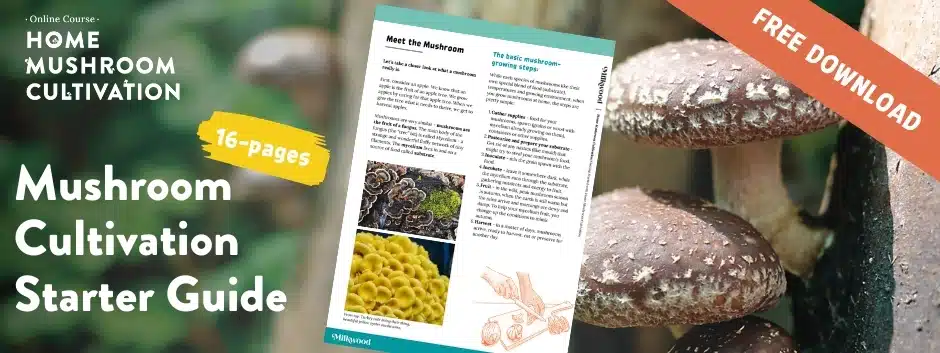


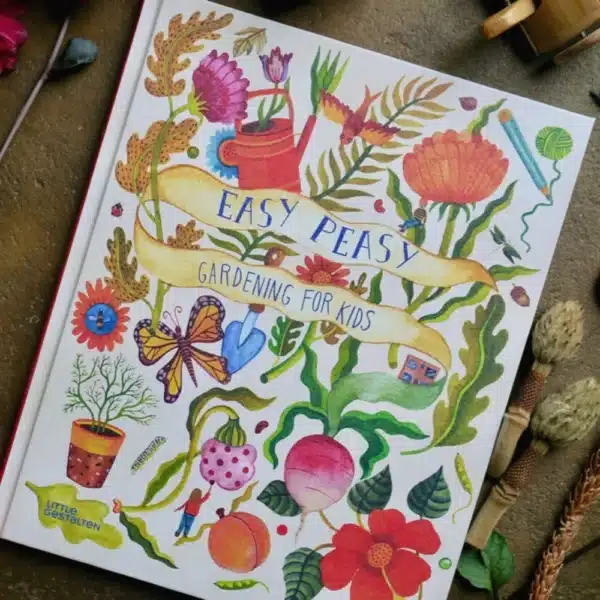
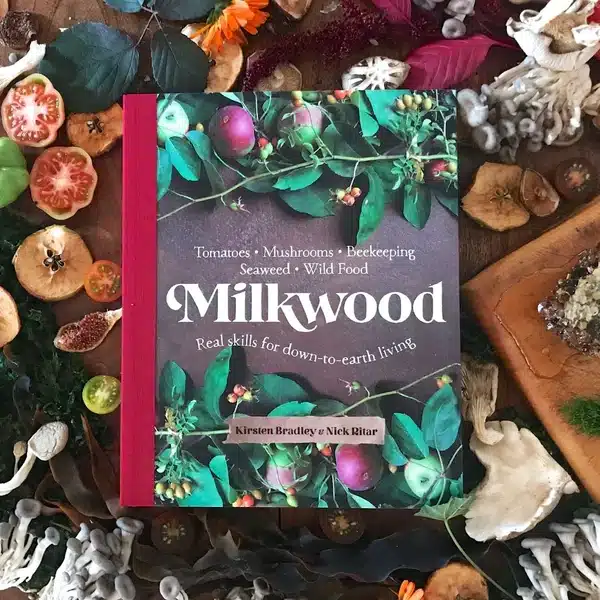
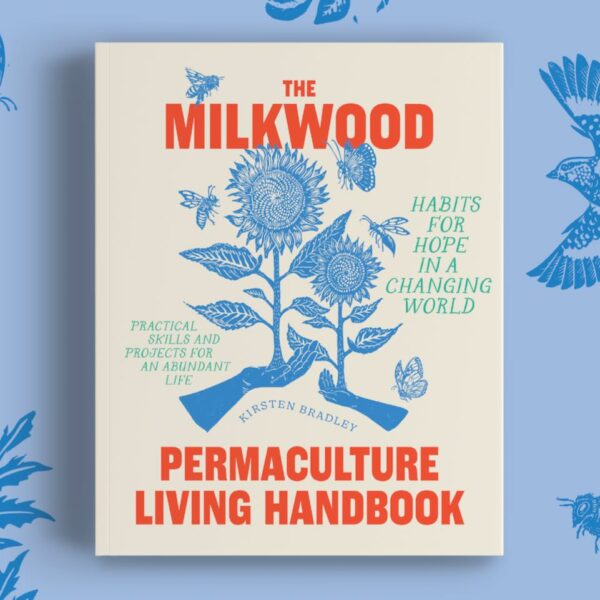






I No longer use email anymore as I find it full of spam and I never read any of my mails anymore so I find emailing a redundant platform. However I love your content and have a copy of the Milkwood Book. So I’m following you as best I can for tips and info. So we need to find another platform that’s immediately accessible and that the individual has control. At present I only use Messenger or What’s app Thank you Robert
Hi Robert! Yep, fair enough. Best I can suggest is checking our site each week or so for new blogposts and articles, if that suits you? Go well –
Hi there, I’m a bit confused by some of the information above. There’s the “8 weeks to grow/6 weeks to decompose” advice from Green Harvest but then you go onto say for a small backyard garden you can start planting in a week after cutting back your manure. Why the difference?
Good question Lydia – we’ve found that on a smaller scale, you can basically plant sooner, because you’re more likely to deal with the digging in and processing on a more intensive level. Also, in smaller spaces there’s often a need for faster turnaround, which is why we would only recommend planting *seedlings* into a small-scale bed that had been left for a week after Green manures (ie not seeding directly – wait another 4 weeks for that). Its true that only leaving it for a week or two is cutting it fine, but we’ve found at a pinch that… Read more »
Great advice, thank you! I have seen the links to buy online, but would love to know if anyone can recommend any VIC based open pollenated seed companies? (to help avoid shipping and support local) Thanks 🙂
Try New Gippsland Seeds https://newgipps.com.au/subcategory.asp?title=green-manure-or-cover-crops&id=370
Excellent 🙂
Hi Kirsten. I’m keen to have a crack at green manure in my veggie garden, and am interested in the Green Harvest kit you mention, however am curious about the subclover in it as a Goodlife Permaculture post (https://goodlifepermaculture.com.au/living-mulches/) mentioned not using clover in the annual veggie patch as it becomes invasive. Would you have any thoughts on that? Thanks so much 🙂
Hmm! Interesting re subclover – we’ve used it in plenty in green manure mixes and loved it. I guess is also depends on your bed-prep style? We tend to be up the intensive end of soil prep, wheras if you’re going for a minimal approach there would be some climates (like Tassie, maybe) where subclover won’t suit. I shall ask Hannah who wrote that article 🙂
I have just purchased some green manure seeds from Green Harvests – thank you for tip. Can I ask, would you recommend planting seeds before or after I dump my compost onto our raise vegie patch? Perhaps save compost or just before planting out with seedlings?
Thank you! :o)
Hey Amber! I’d keep your precious compost for when you’re turning your green manure in, turn the compost in too – your seedlings will love it, but the green manure mix shouldn’t need extra compost to grow, so best to save it? Good luck!
Hi I have read that legumes need to be inoculated first, which from what I’ve read, involves coating them in rhizomes, which need to be stuck on with a glue, one of which is PVA glue would you believe! This was what I found on the DPI site. This maximises crop success.
Not wanting to use any chemicals, are organic legume seeds inoculated and if not, what is the expected coverage? I have a large area to sow, anywhere from 1-30 acres.
Hi Wendy – some legume green manure seeds (vetch, for example) will often come with a small bag of inoculant – this can be organic, or not organic. This inoculant helps the legumes form the nitrogen-fixing nodules on their roots, which increases the yield and is generally great for your soil and future crops. Some soils will contain that biology already – often you don’t need the inoculant to get the nitro-fixing nodule effect, but it depends on your soil… I would call up a large-scale organic seed supplier in your region and see what they say as how best… Read more »
I’ve also been growing mustard as a green manure crop, because I understand that it helps to fumigate the soil to kill the diseases that can damage tomatoes and other related crops. Are there any other plants that have a similar effect in combating soil disease that could be grown as a green manure crop?
Fenugreek is another fumigant – it’s a legume, too. Often used in green manure mixes, and less woody that the mustard stems to dig in?
Hi and thank you so much for all the info on the milkwood site! Just wondering, I have half a dozen climbing snake bean plants that have finished producing beans. Managed to get quite a number of beans. Got the seeds from my local library. If I cut them to ground level and chop them up and add them to my raised vege garden bed do these count as green manure? Or are they too old. Or, should I put them in the compost to use when I add another load of compost at the end of the winter growing… Read more »
Hi Patrick, Great question. Green manure crops are usually cut before they put too much of thier nutrient and stored carbon into flowers fruits or seeds. Your snake been plants will have given a lot of that goodness to make thier beans. That doesn’t means the remainder of the plants has no value though. Cutting them up and adding them to your compost is a great idea. Or you could put them through a mulcher/shredder and use them to mulch your next crop of veggies. I probably wouldn’t dig them into the soil unless they are shredded very finely otherwise… Read more »
Hi Nick,
Thanks for your advice!
I understand what you mean about the plant being young to then boost the soil’s profile, rather than the other way around. It’s a pretty cool concept and I think would come in handy during dry spells as well to keep the soil covered.
I’ll compost the bean plants and go from there.
Cheers!
Hey Nick
I really like the idea of using ‘finished/unused parts’ of plants as mulch. Mulch is expensive over here (NZ) and only ever comes in plastic, so I am trying hard to reduce both! Any thoughts on how to shred finished pea plants (for example) without any cost outlay? is it just chopping up with scissors? I was recommended to use Rhubarb leaves, cabbage, cauli etc as mulch
thanks
Maggie one good way is to lay all the pea plants down on the bed and then ‘chop’ them while flat with a flat-ended spade… works well (and digs them in a bit also) – sometimes we even sharpen the spade a bit to do this…
Thanks for the info. I planted a green manure crop a few weeks back, was interested in ways of turning it into the soil
best of luck 🙂
Hi Kirsten, thanks for the great writeup about Green Manures, and I’m certainly about to plant some winter greens. In your article you give suggestions of what veggies to plant after the manures have been dug in, you suggest the crop rotation style and give examples. Would you be able to break down with what types of plants fall in each of those categories, I simply cannot get my head around which is which or direct me to somewhere I can find these breakdowns? Thanks again love your articles.
Hey there
I planted my green manure but left it too long and now its flowering. It looks amazing and the bees absolutely love it! Now I’m reading I should have harvested a while ago – am I still ok to chop up? Also in the article you talk about cutting down with a rice knife- I presume you mean to take up the roots of the plants as well? thanks
so good to hear that the bees are loving your patch 🙂 – chop it down whenever you get to it – best to harvest above the soil level and leave roots in 9that’s whatr we were trying to say) :), this will help build biomass? The roots will break down fairly quickly